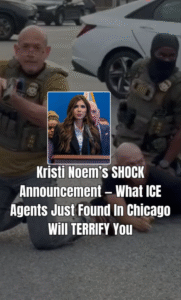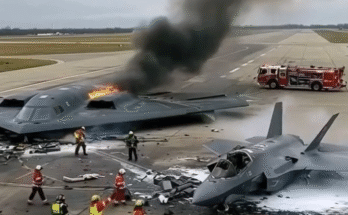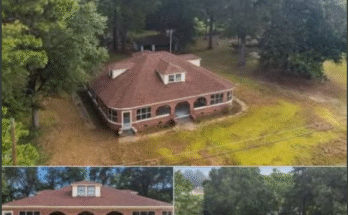It’s Beginning to Look Like Open Rebellion in Blue Cities: Understanding the Rising Tensions
Across the United States, major metropolitan areas often labeled as “blue cities” are showing signs of growing unrest. What once might have been dismissed as isolated protests or sporadic civil discontent is increasingly being described by local officials and political analysts as a form of open rebellion. While the term may sound extreme, it reflects a complex mix of social, economic, and political factors converging in urban centers that have historically leaned Democratic.
This emerging pattern is significant not only for the cities themselves but also for national politics, governance, and public safety. Understanding the causes, manifestations, and implications of this urban unrest is crucial for policymakers, residents, and observers alike.
Signs of Unrest
Reports from multiple cities indicate that public demonstrations, labor strikes, and clashes with law enforcement have become more frequent and intense. In some cases, community groups protesting policy decisions or social injustices have escalated into confrontations that disrupt traffic, commerce, and local governance.
Beyond street protests, other indicators of tension include:
-
Municipal employee strikes or slowdowns, affecting transportation, sanitation, and public services.
-
Escalating tensions between law enforcement and community organizations, particularly around police reform debates.
-
Vocal opposition to city budgets and taxation policies, often amplified on social media.
-
Public occupations or sit-ins in front of government buildings or corporate headquarters.
Analysts note that while these actions are not uniform across all blue cities, their frequency and intensity suggest a growing willingness among residents and activist groups to challenge established authorities openly.
Economic Pressures and Inequality
Economic conditions play a significant role in the rising unrest. Many large urban areas are experiencing high inflation, rising rent costs, and widening income inequality. Essential workers, particularly those in public transit, healthcare, and retail, are increasingly vocal about wage stagnation and unsafe working conditions.
The COVID-19 pandemic exacerbated these issues. Lockdowns, job losses, and health risks left lasting scars on communities that were already struggling. Cities with higher population density and a larger proportion of service-sector employees faced disproportionate economic pressures, fueling frustration that often manifests in public dissent.
For some residents, the perception is that city governments have been slow to address housing affordability, public safety, and equitable access to services. This perception, whether fully accurate or not, contributes to the feeling that ordinary citizens must take matters into their own hands.
Political Polarization and Governance
Political polarization further intensifies the unrest in blue cities. While these areas have traditionally leaned Democratic, internal divisions over policy approaches—such as policing, taxation, and social welfare programs—have created friction within the electorate itself.
Younger activists often push for progressive reforms at a pace that city administrations struggle to implement, while more moderate residents express frustration at both disruption and unmet expectations. This internal tension sometimes fuels public displays of rebellion, as competing factions vie to have their voices heard.
Additionally, social media has amplified local disputes, turning neighborhood disagreements into widely circulated narratives of urban rebellion. Officials face the challenge of managing not just physical unrest but also the viral spread of information—and misinformation—that can escalate tensions overnight.
High-Profile Flashpoints
Several high-profile incidents have drawn national attention and serve as flashpoints for understanding the broader pattern of rebellion:
-
Protests over law enforcement policies: Cities like Minneapolis, Seattle, and Portland have continued to experience demonstrations triggered by policing policies, often blending calls for reform with broader critiques of municipal governance.
-
Labor and union activism: San Francisco, New York, and Chicago have seen public-sector strikes, ranging from sanitation workers to transit employees, disrupting daily life and highlighting grievances about wages, benefits, and working conditions.
-
Tenant and housing disputes: Rising rent and eviction issues in major cities like Los Angeles and Boston have sparked organized sit-ins and coordinated demonstrations outside city halls.
These events underscore the multifaceted nature of unrest in urban areas, blending economic, social, and political concerns into public actions that sometimes cross the line into open defiance of local authorities.
Civic Response and Law Enforcement
City governments and law enforcement agencies are walking a delicate line. On one hand, officials must uphold public order and ensure safety for residents. On the other hand, they face pressure to respect citizens’ rights to protest and participate in civic discourse.
Many cities have adopted measures aimed at de-escalation rather than confrontation, such as establishing dialogue with protest leaders, increasing transparency in policing, and creating task forces to address community grievances. However, these approaches are not always successful, especially when multiple activist groups with differing agendas converge in public spaces.
Some law enforcement leaders warn that the perception of ineffective response may embolden further rebellion. Conversely, heavy-handed policing can exacerbate tensions, fueling a cycle of mistrust and escalation.
Social Media and the Spread of Unrest
Social media platforms play a critical role in modern urban unrest. Videos of protests, confrontations, and municipal disputes are shared widely, often accompanied by commentary that frames events as symbolic of broader political or cultural struggles.
The viral nature of these narratives means that even small-scale local incidents can capture national or even global attention. In blue cities, where civic engagement is high and digital literacy widespread, online amplification acts as both a catalyst and a magnifier of public dissent.
Implications for Policy and Politics
The emergence of open rebellion in major metropolitan areas has several implications:
-
Governance Challenges: City administrations must balance public safety with civil liberties, making policy decisions under intense scrutiny.
-
Economic Consequences: Protests and labor disruptions can impact commerce, tourism, and municipal services, affecting revenue and economic stability.
-
Political Signaling: These events send signals to state and federal lawmakers, influencing debates on policing, taxation, social services, and housing policies.
-
Voter Mobilization: Unrest can energize politically active populations, impacting local and national elections as citizens seek representatives who align with their priorities.
Understanding these dynamics is critical for stakeholders ranging from elected officials to business leaders and community organizers.
Looking Ahead: Trends and Predictions
Experts caution that while unrest in blue cities is visible, it does not necessarily signal a wholesale collapse of governance. Rather, it reflects heightened civic engagement, frustration over unresolved social and economic issues, and the complexities of managing densely populated urban centers.
Predictions suggest that as long as economic pressures persist and political polarization continues, cities may experience sporadic flare-ups of rebellion. However, proactive engagement by municipal governments, effective communication, and targeted policy solutions can mitigate the intensity and frequency of such events.
Conclusion
The signs of open rebellion in blue cities highlight the intricate interplay of social, economic, and political forces in America’s urban centers. From labor strikes and housing protests to demonstrations over policing, residents are asserting their voices in increasingly visible ways.
For policymakers, business leaders, and citizens, the message is clear: addressing underlying grievances, fostering dialogue, and balancing enforcement with empathy are essential to maintaining stability and trust. Open rebellion is rarely spontaneous; it is the culmination of unmet needs, systemic frustrations, and a desire to be heard.
As blue cities navigate these turbulent times, their experiences serve as both a warning and a lesson. The future of urban governance will depend not only on law enforcement and policy but on the ability of city leaders to listen, adapt, and respond to the complex realities of the people they serve.
In the end, the emerging unrest in these metropolitan areas is less about chaos and more about civic awakening—a reminder that democracy thrives when citizens feel empowered to demand accountability and meaningful change.


